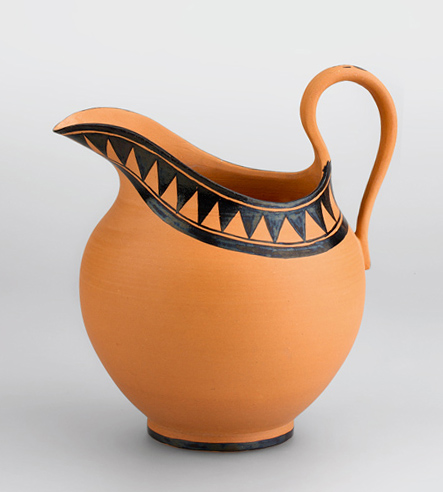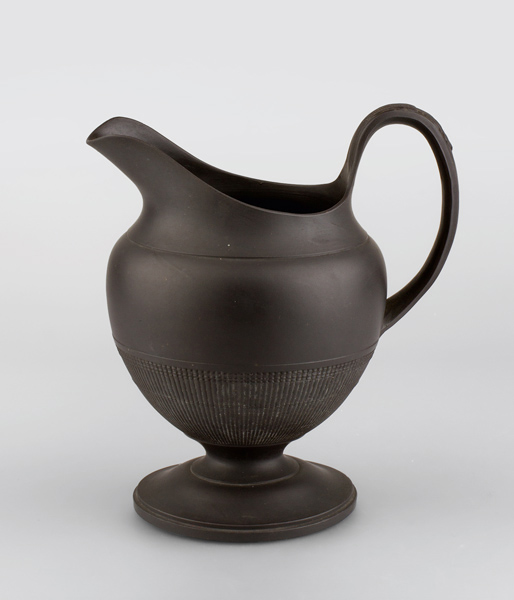

Pottery made from an artificial, very dense and hard fabric which could be stained throughout. In the 1760s and 1770s, Staffordshire’s Josiah Wedgwood developed a series of usually unglazed (or dry-bodied) refined stonewares with matt shiny surfaces (much like bisque) in various colours, including the coveted black (so-called “black basalte”). Coloured fabrics such as these were soon copied by pottery manufacturers on the Continent.
These industrial wares were fired at temperatures of between 1200 ºC and 1350 ºC. From a technological point of view, the terms used are not very precisely defined, as the fabric in these wares is generally not completely vitrified like in stoneware. In German and Dutch parlance, some of these “artificial” ceramic compounds which were produced on an industrial scale (e.g. basalte ware, agate ware, cane ware, red ware, jasper ware etc.) are therefore also termed “industrial earthenware” or “industrial ware”.
Grès fin rouge – red ware – industrial red ware, developed in Staffordshire/England from around 1690, initiated by two brothers, John Philip and David Elers (potters of German and Dutch extraction who emigrated to England)
Grès fin noir – basalte ware (black basalte) – industrial black ware, developed by Josiah Wedgwood in c. 1768.
Grès fin bleu foncé – jasper ware (solid jasper), developed by Josiah Wedgwood in Staffordshire in the 1770s and sold from the late 1770s onwards. In jasper ware, the body could be stained green, purple or yellow.
Grès fin blanc, engobe bleu foncé – jasper ware (dipped jasper) – white-bodied industrial earthenware with blue jasper slip.
Overview of the dates of “industrial wares” (Stellingwerf 2019, Appendix I, by courtesy of the author)
Translation Sandy Haemmerle
German: Feinsteinzeug
French: Grès fin
References:
Bartels 1999
Michiel Bartels, Steden in Scherven, Zwolle 1999, bes. 237-259.
Blondel 2001
Nicole Blondel, Céramique : vocabulaire technique, Paris 2014, pp. 86-87
Edwards/Hampson 1998
Diana Edwards/Rodney Hampson, English dry-bodied stoneware: Wedgwood and contemporary manufacturers 1774 to 1830, Woodbridge Suffolk 1998.
Stellingwerf 2019
Wytze Stellingwerf, The Patriot behind the pot. A historical and archaeological study of ceramics, glassware and politics in the Dutch household of the Revolutionary Era: 1780-1815, Zwolle 2019, bes. 42-46, 201-202.

